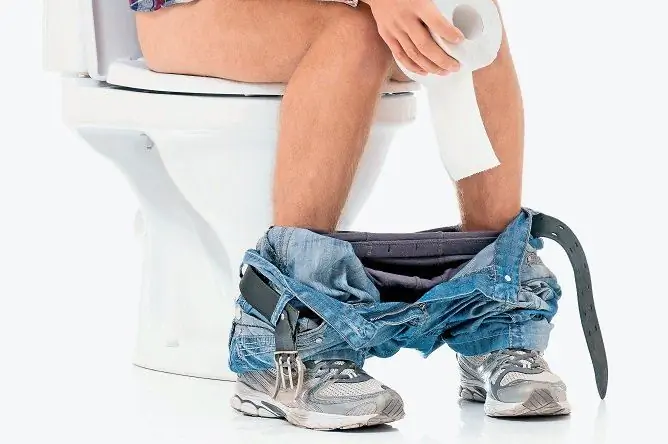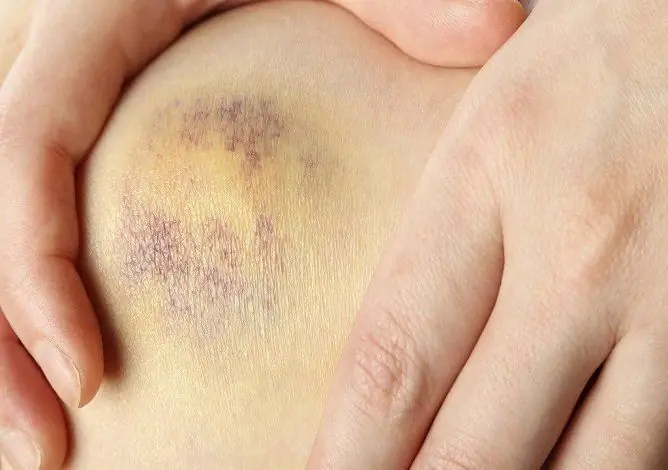- Author Rachel Wainwright [email protected].
- Public 2023-12-15 07:39.
- Last modified 2025-11-02 20:14.
Chronic appendicitis
The content of the article:
- Forms of the disease
- Causes and risk factors
- Chronic appendicitis symptoms
- Diagnostics of the chronic appendicitis
- Chronic appendicitis treatment
- Potential consequences and complications
- Forecast
- Prevention
Chronic appendicitis is a rare form of flaccid inflammation of the appendix (appendix), which develops after an attack of acute appendicitis and is accompanied by atrophic and sclerotic changes in the appendix wall. The disease is more often detected in young women. It practically does not occur in children and the elderly.

Chronic appendicitis is more common in young women
Forms of the disease
There are three forms of chronic appendicitis:
- residual (residual) form - develops after a previously suffered acute appendicitis, which ended in recovery without surgical intervention;
- primary chronic form - develops slowly, without a previous attack of acute appendicitis. Some experts question its presence, therefore, the diagnosis of primary chronic appendicitis is made only if the presence of any other pathology that can cause a similar clinical picture is excluded;
- recurrent form - symptoms of acute appendicitis recurring in the patient are characteristic, which subside after the transition of the disease to the stage of remission.
Causes and risk factors
The main reason for the development of chronic appendicitis is a slow-flowing infectious inflammatory process in the appendix.
The development of primary chronic inflammation is facilitated by disorders of trophism and innervation of the appendix wall, which lead to a decrease in local immunity. As a result, microorganisms in the intestines provoke mild inflammation that can last for many years, causing discomfort and pain in the right side of the abdomen. Under unfavorable conditions, a sluggish inflammatory process can be sharply activated, and then acute appendicitis develops.

The main cause of chronic appendicitis is a sluggish infectious process
Secondary chronic inflammation is the outcome of acute inflammation of the appendix. If, for one reason or another, surgical treatment of acute appendicitis has not been carried out, very dense adhesions form in the appendix, reducing its lumen. This causes stagnation in the appendix of the intestinal contents, which provokes a prolonged inflammatory process of insignificant activity.
The recurrent form of chronic appendicitis can be caused by both primary and secondary chronic inflammation. The periods of exacerbation of the disease are provoked by various unfavorable factors (stress, hypothermia, acute infectious diseases), which reduce the general immunity and thereby create the prerequisites for increasing the activity of the inflammatory process in the appendix.
Recurrent chronic appendicitis in very rare cases develops after surgical removal of the appendix (appendectomy). This can happen if the surgeon has left a part of the appendix longer than 2 cm.
Chronic appendicitis symptoms
The symptomatology of chronic appendicitis is blurred, and sometimes it may be completely absent (during periods of remission with a recurrent form). Usually, patients complain of recurring aching dull pain in the right iliac region. The pain is of low intensity, but can be aggravated by gross errors in the diet, intense physical exertion.

The main symptom of chronic appendicitis is dull aching pain in the iliac region
Other symptoms of chronic appendicitis are:
- flatulence;
- constipation, alternating with diarrhea;
- nausea;
- an increase in body temperature in the evening to subfebrile values (37.1 - 37.9 ° C).
In women, a symptom of chronic appendicitis is pain that occurs at the time of mechanical action in the area of the uterus, for example, during intercourse or gynecological examination using a vaginal speculum.
Pain that occurs at the time of a rectal examination of the prostate gland can be a symptom of chronic appendicitis in men.
Chronic appendicitis can also be accompanied by the development of urinary manifestations - frequent and painful urination.
With an exacerbation of chronic appendicitis, patients develop a clinical picture corresponding to acute appendicitis.
Diagnostics of the chronic appendicitis
The diagnosis of chronic appendicitis is rather difficult, since there are no objective clinical symptoms of the disease. Some help in the diagnosis is provided by anamnesis data - an indication of the patient to one or more of the attacks of acute appendicitis he has suffered.
Indirect signs of chronic appendicitis may be weakly positive (without exacerbation) symptoms of Sitkovsky, Rovzing, Obraztsov, as well as the presence of a zone of local pain in the right iliac region.
If chronic appendicitis is suspected, an irrigoscopy (X-ray of the large intestine using contrast) is performed. This reveals the following changes:
- narrowing of the lumen and deformation of the appendix;
- incomplete filling of its lumen with contrast;
- delayed emptying (removal of contrast).
To exclude neoplasms in the colon and cecum, colonoscopy is indicated, as well as ultrasound scanning and plain radiography of the abdominal cavity.

Irrigoscopy and colonoscopy are used as a differential diagnosis of chronic appendicitis.
Laboratory diagnosis of chronic appendicitis is not very informative, since in clinical blood and urine tests, changes are usually not detected, or they are associated with some other pathology.
Differential diagnosis of chronic appendicitis is carried out with the following diseases:
- helminthic invasions;
- gynecological diseases;
- diseases of the urinary tract;
- colon tumors;
- ileotiflitis and typhlitis;
- yersiniosis;
- abdominal ischemic disease;
- spastic colitis;
- chronic cholecystitis;
- irritable bowel syndrome;
- Crohn's disease;
- peptic ulcer of the stomach and duodenum.
Chronic appendicitis treatment
If the diagnosis of chronic appendicitis is beyond doubt and the patient has a persistent pain syndrome, an appendectomy is performed - an operation to remove the appendix in a laparoscopic or traditional (open) way.
If you doubt the presence of chronic appendicitis, you should refrain from performing an appendectomy, since the removal of an unchanged process in the future usually only aggravates the severity of the pain syndrome that served as the basis for surgical intervention.

The operation to remove the appendix is performed if the diagnosis of chronic appendicitis is not in doubt
Treatment of chronic appendicitis with mild symptoms is conservative. Patients are prescribed antispasmodic and anti-inflammatory drugs, physiotherapy procedures.
Potential consequences and complications
Long-term chronic appendicitis leads to the development of an adhesive process in the abdominal cavity, which, in turn, can cause intestinal obstruction.
At any time, chronic appendicitis can turn into an acute form, and the untimely performance of a surgical operation in this case threatens the development of peritonitis, a potentially life-threatening condition.
Forecast
The prognosis for timely treatment of chronic appendicitis is favorable.
Prevention
There are no specific measures to prevent chronic appendicitis. It is necessary to adhere to a healthy lifestyle (proper nutrition, rejection of bad habits, sports, adherence to work and rest), which allows you to increase the activity of the immune system and thereby reduce the risk of inflammation in the appendix.
YouTube video related to the article:

Elena Minkina Doctor anesthesiologist-resuscitator About the author
Education: graduated from the Tashkent State Medical Institute, specializing in general medicine in 1991. Repeatedly passed refresher courses.
Work experience: anesthesiologist-resuscitator of the city maternity complex, resuscitator of the hemodialysis department.
The information is generalized and provided for informational purposes only. At the first sign of illness, see your doctor. Self-medication is hazardous to health!






